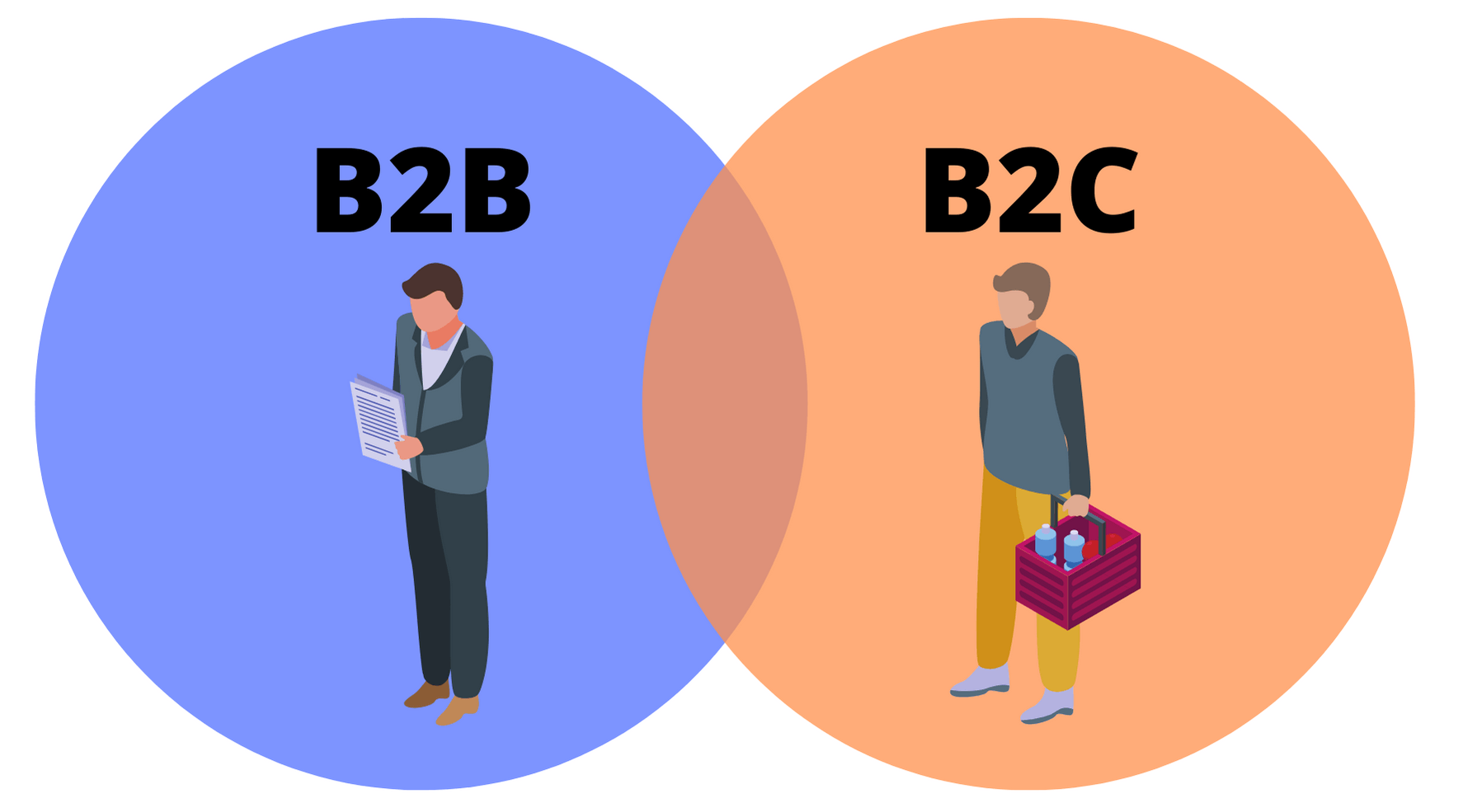What is B2B Business?
B2B stands for business-to-business. In a B2B setup, products and services are sold to other businesses. To give an example, Maersk Line, a global shipping company that operates over 600 ships, is a leading B2B business. Its diverse client base includes export and import companies.
A B2B transaction occurs when a business needs to source raw materials for its production process or when it needs operational support. Let's look at two examples. A baking company may do business with a business that manufactures emulsifiers for its products. For operational support, a retail company may engage a human resource management (HRM) software vendor to streamline its recruiting process.
What is B2C Business?
A B2C, or business-to-consumer company, is one that sells products and services directly to consumers. Restaurants, retail chains, housekeeping services are all examples of B2C businesses.
The term B2C became popular in the late 2000s when online retailers began making the most of the dot com boom. Thanks to the Internet, people could buy just about anything in a matter of minutes. The dot com boom eventually went bust, but online retailers like Amazon.com and eBay gained immense popularity in the B2C space.
How are B2B and B2C different?
By now, it should be clear that B2B and B2C businesses are very different because their target audiences are different. Let's explore the specific areas where these two models contrast.
procurement process
In a B2C transaction, the purchasing process is shorter and often simpler. A consumer knows what he wants, browses the net, finds the item he is looking for and makes the purchase. A B2B transaction is much more complex than that.
In B2B settings, the buying decision is not made by one person. The decision-making group often includes people from different departments and verticals. As a result, it takes a long time to reach a consensus. What also makes the buyout decision more time consuming is the fact that the money involved is usually higher than what the B1 company will pay, so the risk is also higher.
Companies Successfully Juggling the B2B and B2C Worlds
Although it is not always easy, many well-known brands have proven that companies can achieve success in both B2B and B2C segments. Take Amazon, for example. Over the years, the online retail company has carved a niche in the B2C domain for its offerings ranging from watches to groceries to its large customer base.
The company is also emerging as a force to be reckoned with in the B2B space. It successfully launched Amazon Business last year to attract business customers. It has also forayed into the handmade goods segment with its newly launched online store.
Another success story is Facebook. The social networking giant has proved its critics wrong by staying relevant. It began as a B2 platform aimed at younger users, who found it both interesting and engaging as a social networking platform. The company started focusing on targeting businesses soon after it tasted extraordinary success around the world. Today Facebook for Business is a money-spinner for the company that is still hugely popular among users.

